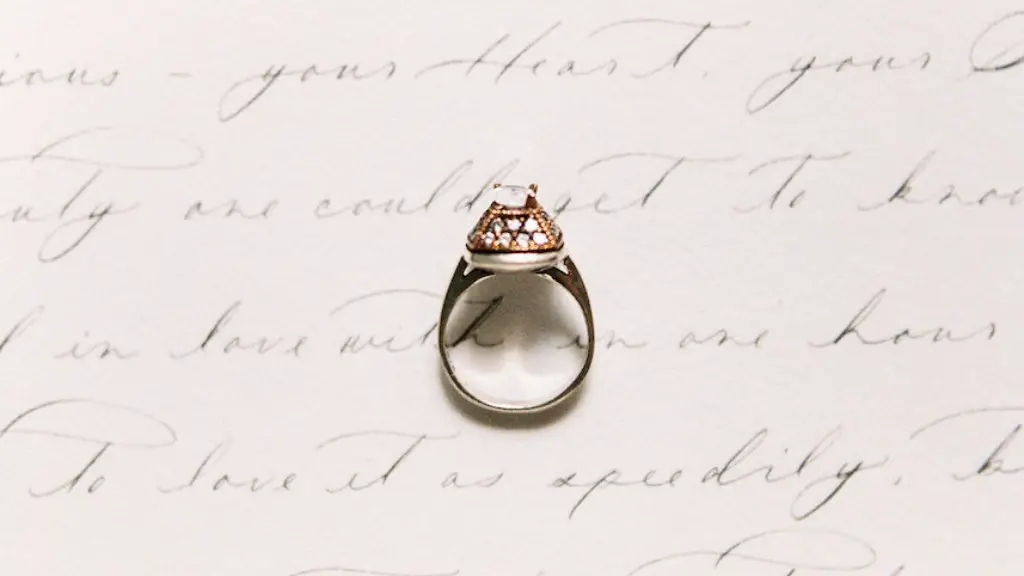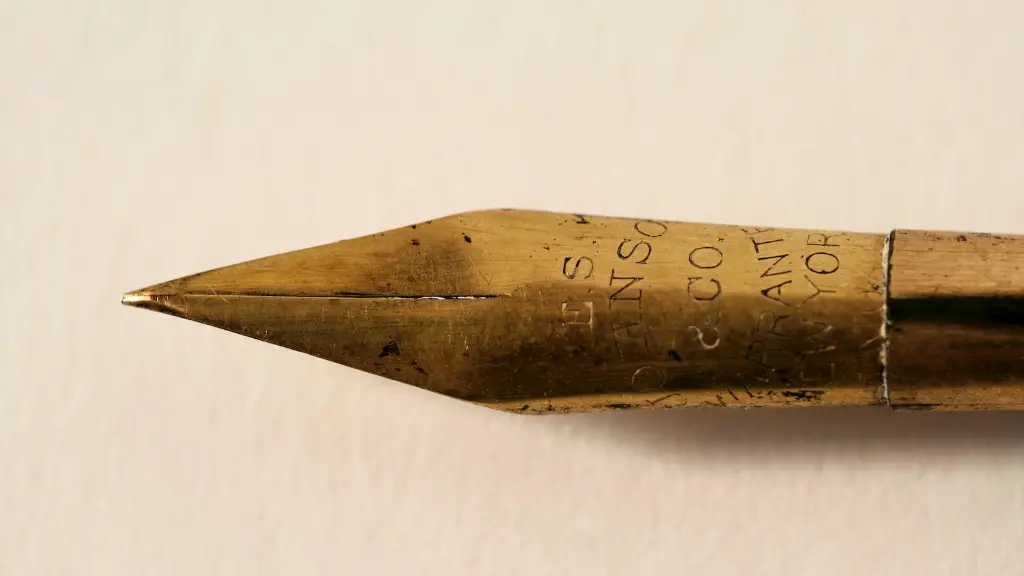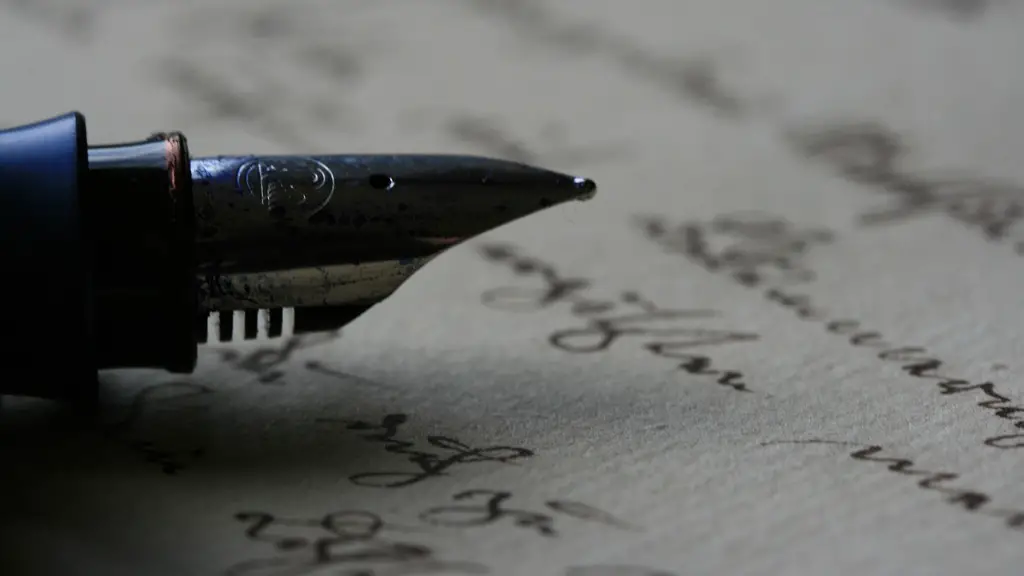In Emily Dickinson’s time, women were not supposed to be serious writers– let alone poets. But Emily’s passion for words and stories led her to become one of America’s most celebrated poets. So what inspired her to write?
There are many factors that may have influenced Emily Dickinson to write poems. She was an avid reader from a young age, and had a deep interest in literature and language. Additionally, she was deeply religious and had a strong connection to nature. These elements may have all contributed to her decision to write poetry.
How did Emily Dickinson start writing poetry?
Dickinson began writing as a teenager and was influenced by Leonard Humphrey and Benjamin Franklin Newton. She was particularly inspired by Ralph Waldo Emerson’s book of poetry.
Emily Dickinson is one of the most original and unconventional writers in American history. She was known for her use of dashes, dots, and unconventional capitalization, as well as her vivid imagery and idiosyncratic vocabulary. Instead of using pentameter, she was more likely to use trimester, tetrameter, and even dimeter at times. This made her writing style unique and immediately recognizable.
How was Emily Dickinson influenced by romanticism
Dickinson’s poems are full of imagination and escapism, which are two key characteristics of the Romantic movement. She also has a very strong individual voice, which is another key element of Romanticism. In this particular poem, she also highlights the spiritual side of nature, which is another central theme of the Romantic movement.
Dickinson’s poetry was heavily influenced by her reading of the Book of Revelation and her upbringing in a Puritan New England town, which encouraged a Calvinist, orthodox, and conservative approach to Christianity. The Metaphysical poets of seventeenth-century England also had a significant impact on her work, as she often drew on their ideas and imagery when crafting her poems.
Why did Emily Dickinson start writing?
Some scholars believe that a serious and troubled romantic attachment drove Dickinson’s creative output during this time. Dickinson also referred to a trauma that she described in a letter: “I had a terror – since September – I could tell to none” (L261). It is possible that this trauma was related to the romantic attachment that was troubling her.
Emily Dickinson’s poems often employ short stanzas, mostly quatrains, with short lines. This creates a certain rhythm and flow to her poems that can be quite pleasing to read. Additionally, many of her poems rhyme on the second and fourth lines, which adds to the overall effect. Other stanzas employed by Dickinson include triplets or pairs of couplets, and a few of her poems make use of longer, looser, and more complicated stanzas. All of these elements come together to create the unique style that is Emily Dickinson’s poetry.
What was Emily Dickinson poetry style?
Emily Dickinson was an American poet who is today best known for her use of slant-rhyme, conceits, and unconventional punctuation. She was part of a prominent Amherst, Massachusetts family and was known for her reclusive habits.
Emily Dickinson is often considered one of the most innovative and influential poets of her time. Scholars have noted that Dickinson often addressed common literary themes of her era, such as love, death, sentiment, war, religion, but in unique and often unexpected ways. This originality has led many to consider Dickinson one of the most important American poets.
What literary elements did Emily Dickinson use
Dickinson’s use of poetic devices creates ambiguity in her poems, which can be seen in her use of imagery, enjambment, and dashes. By using these devices, Dickinson highlights the uncertain nature of her subjects, making them even more ambiguous. This can be seen in her poem “I’m nobody! Who are you?”, where the use of enjambment and dashes create a sense of uncertainty about the speaker’s identity. In “Because I could not stop for Death”, the use of imagery creates a sense of ambiguity about the speaker’s final destination. Ultimately, these devices add to the overall ambiguity of Dickinson’s poetry, which is one of its most interesting aspects.
Emily Dickinson is one of the most important female poets of the literary era. She was a Romantic figure, and was influenced by transcendentalism and dark romanticism. She is known for bridging the gap to Realism, and her works focus on expressing the hidden consciousness of fragmented thoughts.
What are two characteristics of Emily Dickinson’s style?
Dickinson’s use of dashes and capitalization is unique and often confusing to readers. It is unclear why she chose to use these unconventional methods, but it is believed that she wanted to create a more flowing and natural style of poetry.
Dickinson’s seclusion was both a blessing and a curse. It allowed her to focus on developing her poetry, but also meant that she was often lonely and cut off from the outside world. Her poems addressed a range of emotions, from happiness and ecstasy to loneliness and pain, as well as death, religion, morality, and love.
What are 3 interesting facts about Emily Dickinson
Emily Dickinson was an American poet who was active in the mid-19th century. She is considered one of the most important authors of that period. Dickinson was born in Amherst, Massachusetts, in 1830. Her father, Edward Dickinson, was a United States Senator. Her mother, Emily Norcross Dickinson, was a devoted Calvinist. Dickinson was educated at Amherst Academy, where she excelled in botany. She also studied at Mount Holyoke Female Seminary, but left after one year. Dickinson became increasingly reclusive in the 1850s, and only ten of her poems were published during her lifetime. In the 1860s, she began a correspondence with Thomas Wentworth Higginson, a literary critic and social reformer. This friendship led to the publication of several of Dickinson’s poems, including “Success is counted sweetest” and “Because I could not stop for Death.” Dickinson’s work was largely unknown until the 1920s, when her poems were rediscovered and published posthumously. Since then, Dickinson has been widely lauded for her innovative poetic style and her insights into the human condition.
Emily was considered strange by the residents of her hometown as she took to wearing white clothing much of the time, and also for her reclusive nature. She eventually refused to come downstairs to greet her guests and sometimes would only hold conversations through the closed door of her bedroom. Emily’s behavior was likely due to her mental illness, which made her withdraw from society. While her behavior may have seemed odd to the people in her town, she was probably just trying to cope in the best way she knew how.
What is Emily Dickinson most famous quote?
Hope is the one thing that never disappears. It’s the one thing that always lingers, even in the darkest moments. Hope is the light that guides you through the darkness. And it’s the one thing that never stops.
Dickinson is a poet who is known for her unique voice and style. She often writes about dark and depressing topics, such as death and suffering. However, she also has some poems that are more optimistic and uplifting. These poems are often more like small essays, with a deeper level of understanding than other poems.
How did Emily Dickinson life influence her poetry
Emily Dickinson’s life was a big influence on her writing style. She would often use her life experiences to dictate her poems, and the themes of death, love, and friendship were often seen in her work because they were all impacted by the people in her life. Many of the people in Dickinson’s life, such as her family and friends, had a big influence on the way she wrote her poems.
Dickinson artfully uses symbols such as a child, a field of grain, and a sunset to establish the cycle of life and its different stages Dickinson utilizes the example of the busyness of the speaker and the death of the sun to establish the inevitability of death. The symbols work together to create a picture of life that is constantly moving and changing, with death as the eventual end. Each symbol represents a different stage of life, from the innocent beginnings represented by the child, to the growth and abundance of the field of grain, to the decline of the setting sun. Together, they create a vivid image of the cycle of life, with death as the ultimate destination.
Warp Up
There is no definitive answer to this question, as Dickinson’s motivations for writing poetry are likely to have been complex and multi-faceted. However, some possible factors that may have influenced her to write could include her strong literary and poetic interests, her reclusive lifestyle, her unique and unconventional views on religion and death, and her acutely observed and intensely felt experience of the natural world.
There is no one answer to this question as Emily Dickinson was a complex individual with a wide range of interests and experiences. However, it is clear that she was deeply affected by the death of her father when she was just twelve years old, and this event likely played a role in her later decisions to become a poet. Additionally, Dickinson was an avid reader, and she likely drew inspiration from the works of other poets she admired. Finally, her unique experiences as a woman living in a largely male-dominated society may have also influenced her to write poems that explore the female experience.





